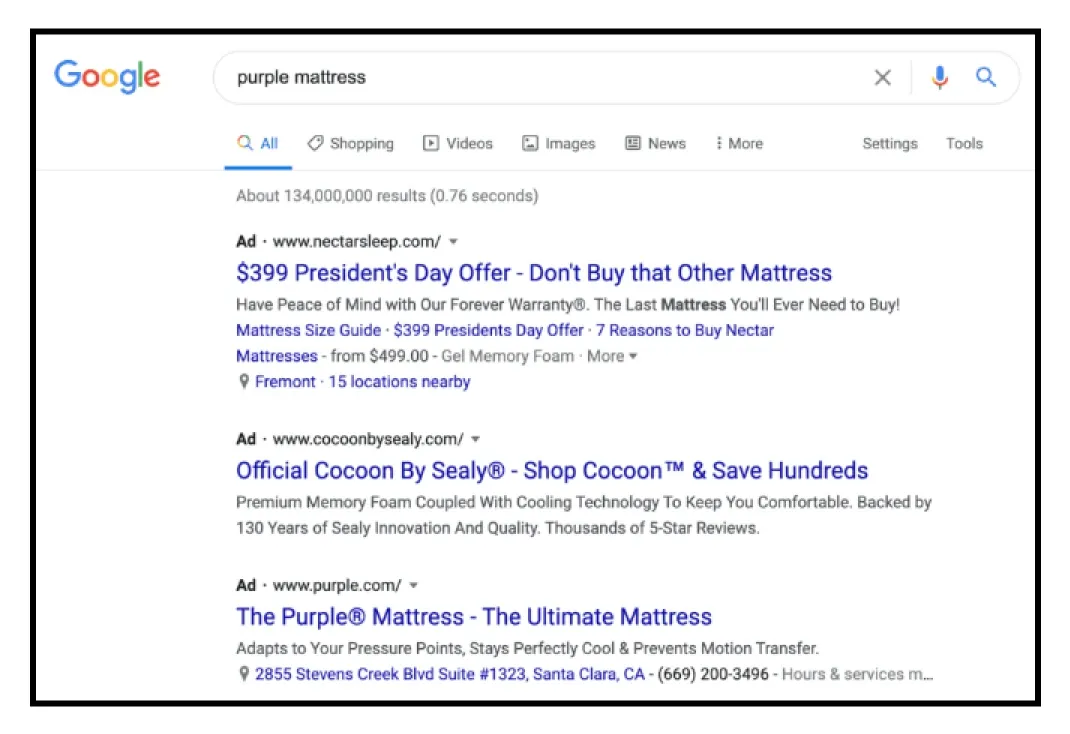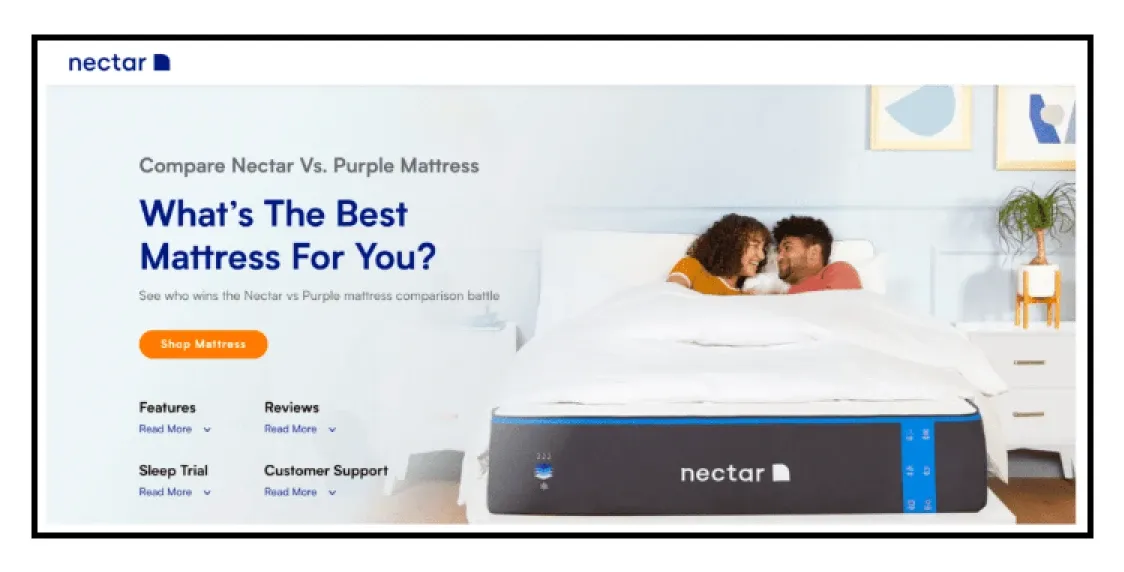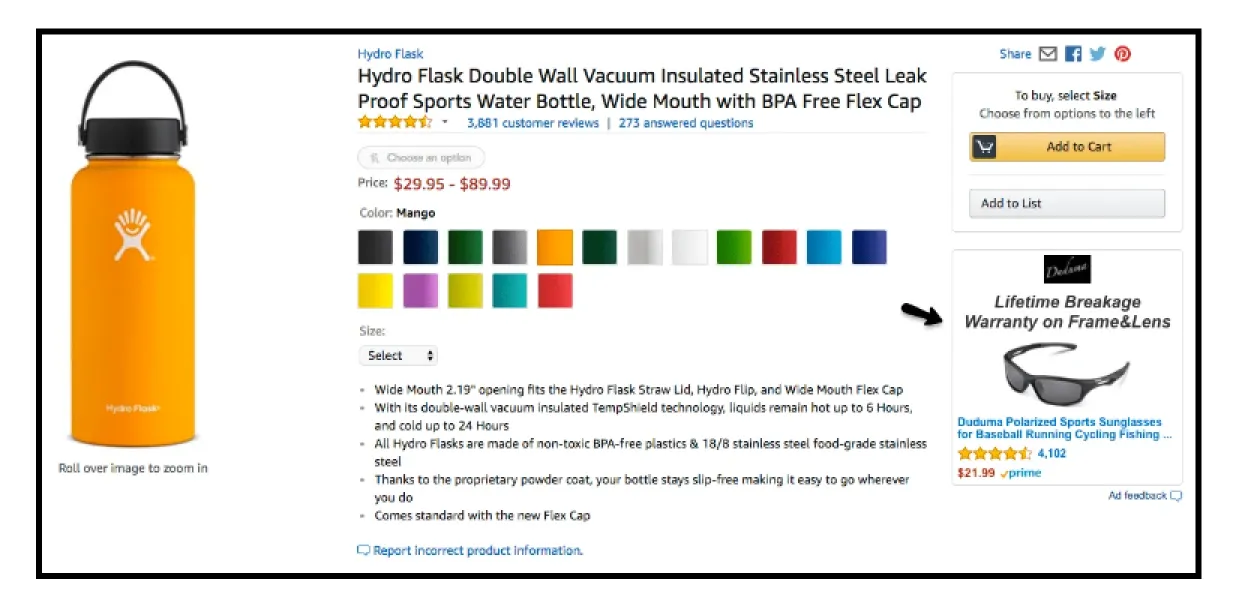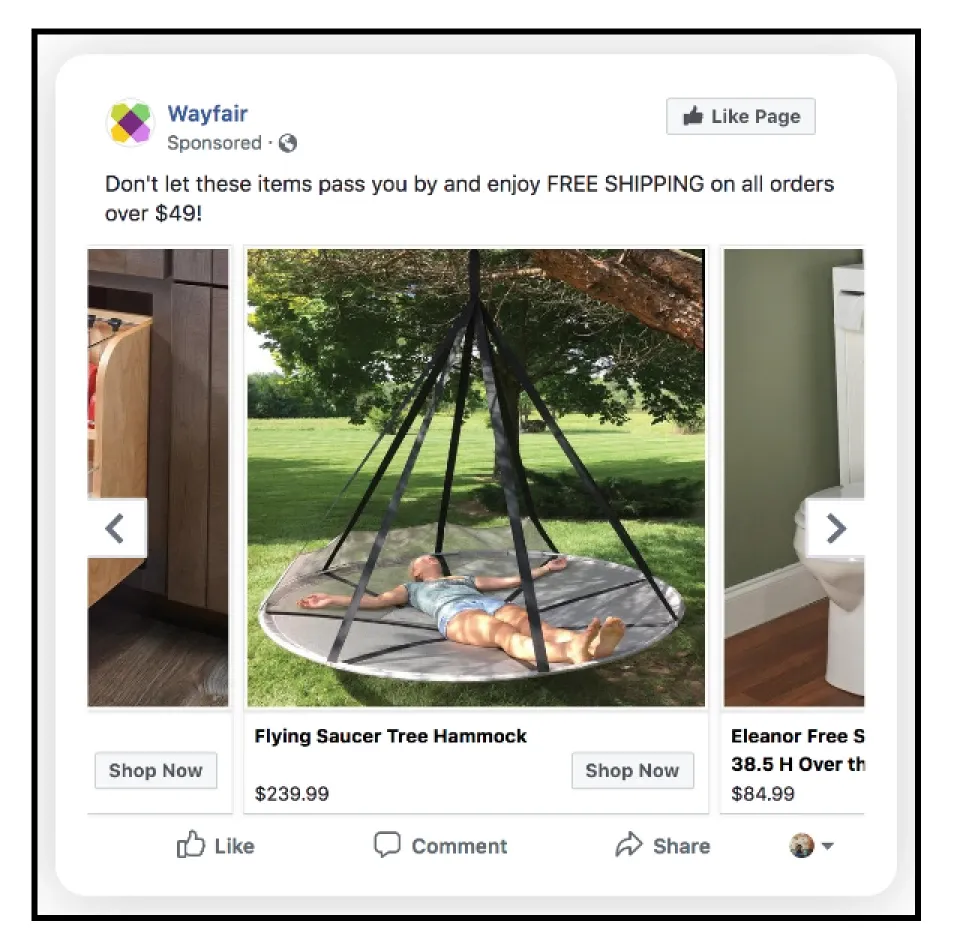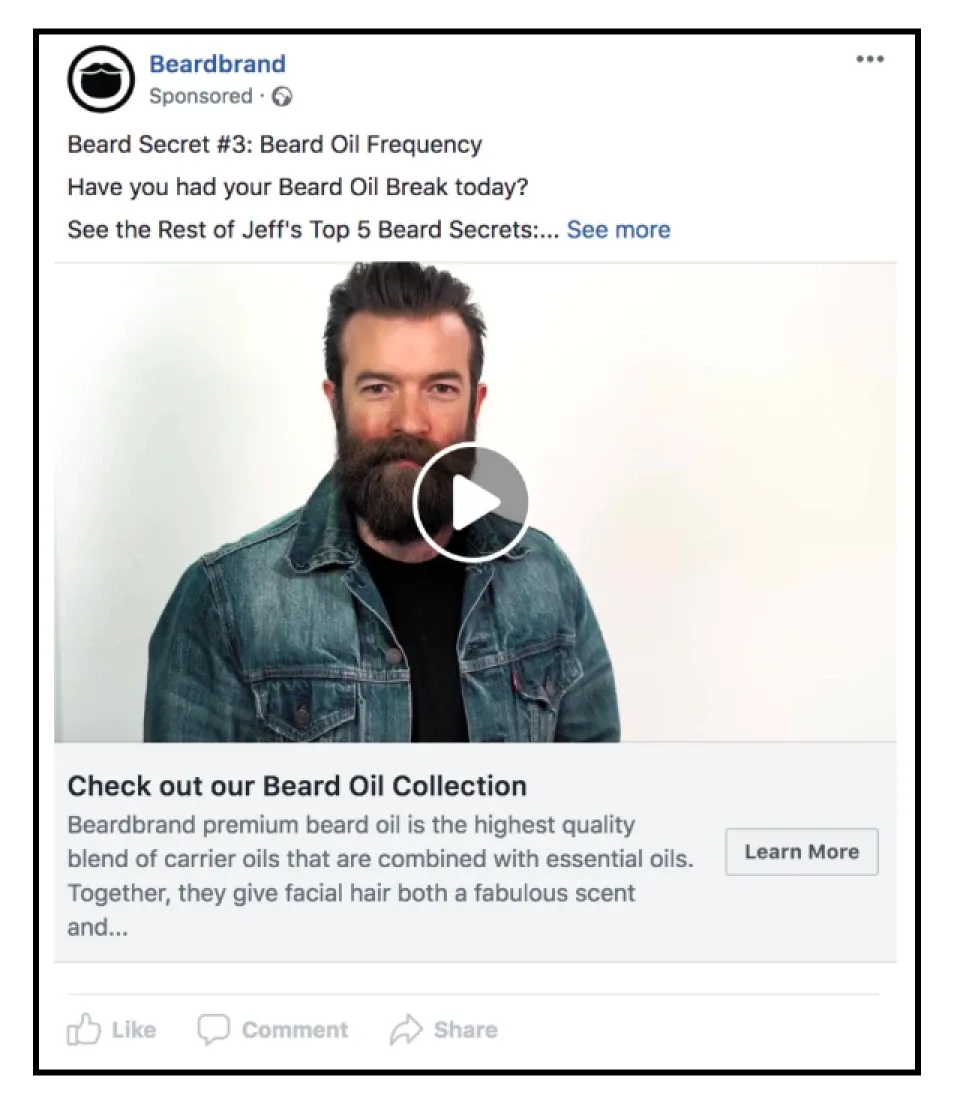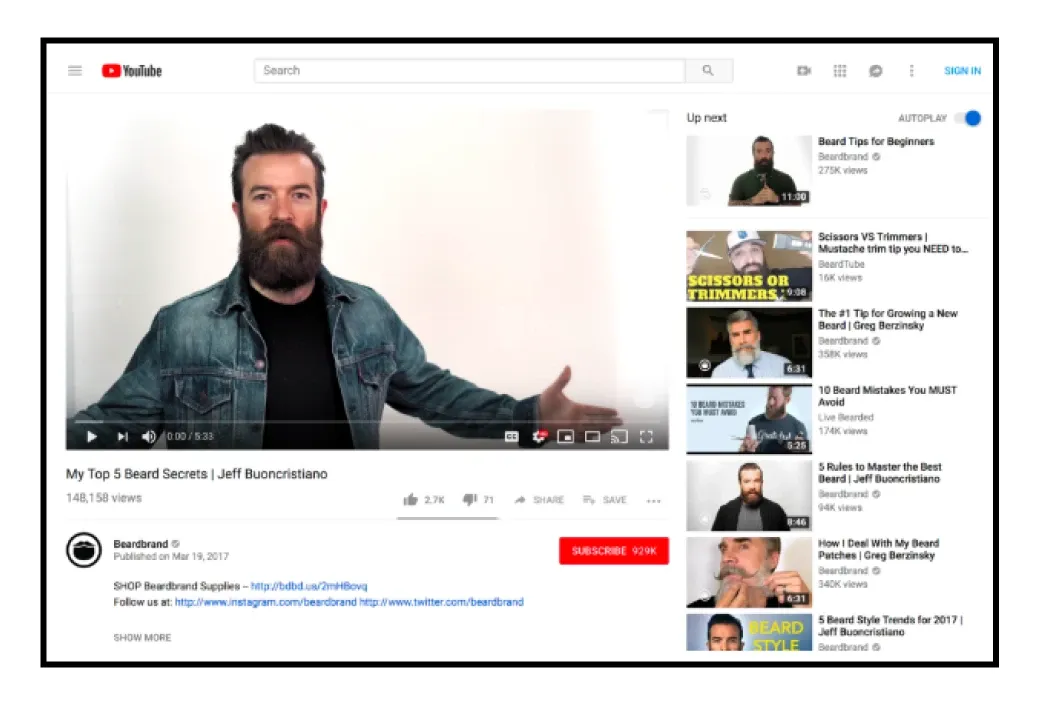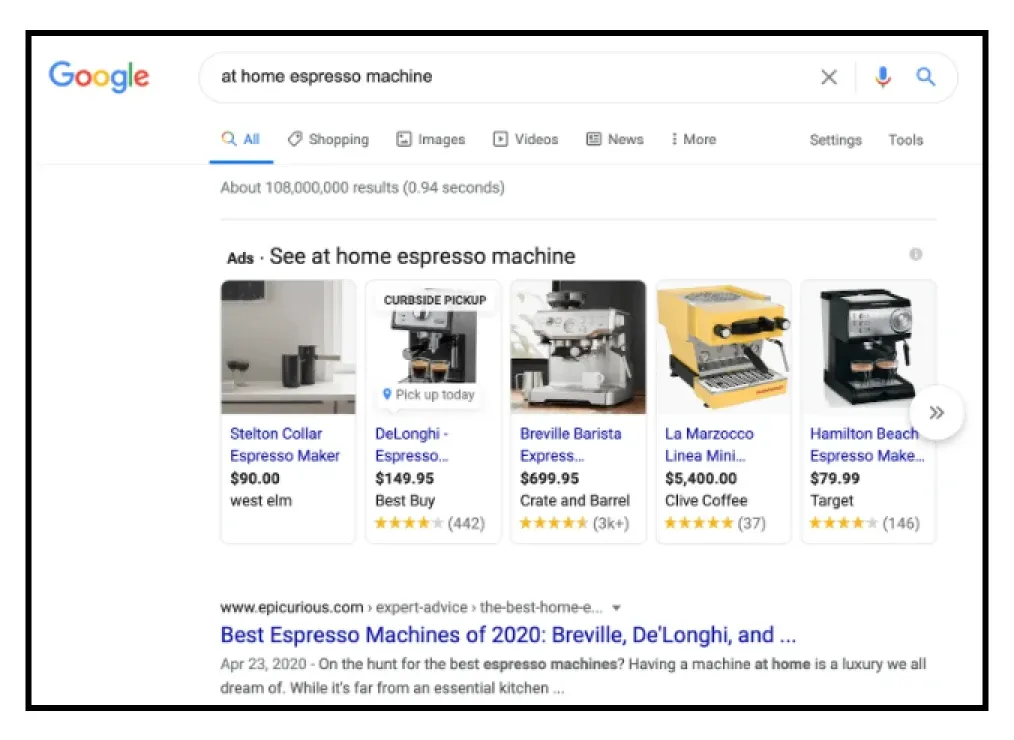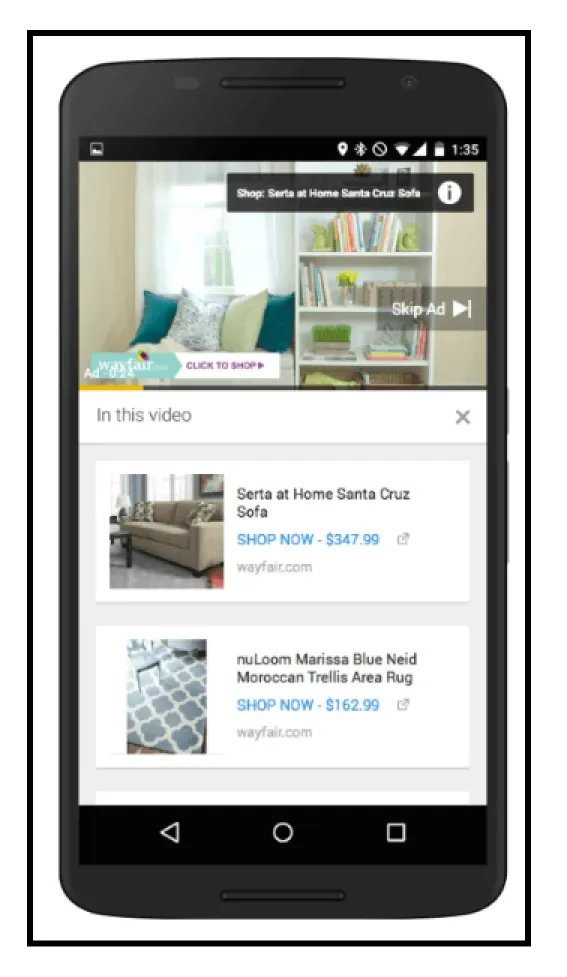Why should you use PPC advertising?
PPC advertising is the critical weapon in the arsenal of DTC brands to grab the users’ attention. The last two years changed the underlying paradigm of the retail ecosystem and DTC has emerged as the dominant player. No wonder, DTC and PPC ads have become a match made in heaven.
Pay-per-Click (PPC) model is a pure-play performance-based marketing process. Being closely intertwined with sales, Ecommerce and DTC businesses leverage pay-per-click in digital marketing to assess their budget more carefully. For new DTC brands, this is a great approach to get their name out there and start selling products.
Being versatile, the paid advertisement can be easily integrated into any of the DTC brands’ sales stages – the awareness, consideration, or even funnel-building stage. Campaign-specific KPIs and extensive A/B testing capability make PPC advertisements the most preferred choice for marketers and business owners alike.
Let’s walk you through the different PPC ad formats worth implementing.
PPC Ad Formats
PPC advertising for DTC brands has two-pronged benefits: Firstly, during the consideration phase pay per click advertising lets you sort customers based on what they’re looking for, to drive engagement. In the button of the funnel stages, PPC advertising is all about making sales.
Let’s see the different types of PPC ad formats and PPC ad examples and examples to help you understand this better.
1) Search ads
This is one of the most popular and widely used ad formats used by marketers. By choosing the keyword they want to showcase and based on the ad positioning, the ad is placed in Google search engine or Microsoft Bing search engine. The search engine uses an auction system to decide on which page the ad would be placed and how much payment marketers need to pay.
Case in point is the Google PPC ad by DTC brand Nectar mattress. Its competitive search ads target a specific audience who might have heard of the competitor Purple mattresses and wants to do a neck-to-neck comparison with Nectar.
ppc-advertising-for-dtc-search-ads
ppc-advertising-for-dtc-post-click-landing-page
In the post-click-landing page, Nectar precisely walks the audience through the strengths and why people should strongly consider purchasing Nectars’ products.
2) Display ads
Display ads are another form of PPC ad network widely used to create and spread awareness about products or services. They appear before the users who might have shown interest or inquisitiveness in your products or services. Marketers use Google Display Network (GDN) for display ads. Though it might have a low conversion rate, the cost is quite low as well.
A great example of display ads would be Duduma sunglasses on Amazon. The brand showcases its exclusive sunglasses in an attractive manner so the ads don’t miss your eyeballs.
ppc-advertising-for-dtc-display-ads
3) Remarketing ads
A remarketing ad is used to reduce the frequent drop-offs, cart abandonment, or rekindling the lost interest. As the users are already familiar with your products or services, the remarketing campaign is considered one of the most profitable PPC ad campaigns. From winning back lost customers to creating upsell and cross-sell opportunities, a remarketing campaign lets your DTC brand stand apart from competitors.
Remarketing ads are effective for:
- Customers who purchased products/services in the past
- Buyers who subscribed to videos or newsletter
- Potential customers who dropped off/abandoned the cart
- Users who spent significant time on the website but didn’t convert
Wayfair, a US-based Ecommerce furniture brand, uses remarketing ads on Facebook to re-engage with cart abandoners. What’s notable here is how the ad mentions “Free shipping” to nudge the customer to make the purchase.
PPC ad optimization tip – Give your customers a compelling reason to make the purchase: be it urgency, discount, free shipping, or more.
ppc-advertising-for-dtc-remarketing-ads
4) Social ads
With billions of users on Facebook, Instagram, TikTok, LinkedIn, Twitter, Snapchat, and more, social media platforms have become the best platforms for PPC ad management: be it for brand awareness, nurturing relationships, or re-target existing customers.
While you come across several paid ads every time you open a social media platform, let’s walk you through a unique ad that caught our attention.
Ecommerce brand Beardbrand is a household name in the US for men’s grooming products. The brand is driving traffic to its most popular content through Facebook ads.
Here’s the ad: Jeff’s top 5 beard secrets.
ppc-advertising-for-dtc-social-ads
The video ad is a 23-second preview of a 5.33-minute YouTube video. As promised, the ad reveals only one of the five secrets. Then, you need to click through to YouTube to watch the remaining video.
ppc-advertising-for-dtc-social-ads-through-youtube-video
And if you’re ready to buy, you can click on the link in the video description to buy from Beardbrand’s site.
ppc-advertising-for-dtc-video-description-of-beardbrand
5) Google Shopping ads
Google Shopping ads would be one of the obvious reasons we have often come to know about new product launches of Ecommerce/DTC brands. Shopping ads, a type of Google paid advertisement provide a brief description of the product alongside an image. As the user gets a vivid idea of the product, the path to conversion becomes easier.
ppc-advertising-for-dtc-google-shopping-ads
Shoppable ad PPC optimization tip – When writing your product title, use the actual name of the product, with your top keyword and important details like color, model, and so on.
You have a 150-character limit in the product title field, so include the most important product details you want shoppers to see.
6) Gmail sponsored promotions
Gmail sponsored ad is a great option to target your audience precisely and in the most direct manner. The promotional emails will end up right at the top of their inbox but a little ad sign will be displayed on the left side.
DTC brand HelloFresh is a subscription-based meal delivery service. The subject line, $80 off is irresistible for most readers.
ppc-advertising-for-dtc-gmail-sponsored-promotions
PPC ad optimization tip – Include an enticing promotion and a clearly defined value proposition in your Gmail ads.
7) YouTube Instream ads
While or just before watching YouTube videos, you encounter Instream ads with or without skipping options. Instream ads are an extremely popular type of PPC ad to grab the audience’s attention as 62% of all internet users do watch YouTube videos regularly. Placing the right ad before such a wide audience gives the competitors a run for their money.
WayFair is known for creative and distinctively attractive YouTube ads that have a great storyline and product information.
ppc-advertising-for-dtc-youtube-instream-ads
Best PPC Ad Networks
The success of a PPC ad doesn’t only depend on the type of ad but on the ad network you choose. Based on the reach and the target audience set, the ad network determines how the paid ad would be perceived by the audience. Here, we‘ve put together the top 9 best ad networks for you.
1) Google Ads
Google Display Network undoubtedly is the king in terms of network reach out and bandwidth, given the sheer amount of websites on GDN and the sheer volume of queries conducted on Google’s search engine. Google PPC ad targeting can be of the in-market audience, similar audience, or even remarketing audience.
The ability to add demographic targeting gives marketers the flexibility to narrow down and precisely reach the target audience. That’s why worldwide, marketers flock to Google paid advertisements.
Placements: Google search engine results, web placements on the GDN, shopping, mobile apps, and YouTube.
Ad Formats: Text, image, responsive, and video.
Pricing: Cost-per-click (CPC) model based on the competition and ad quality. GDN allows Cost-per-1,000 impressions (CPM).
Pros:
- Quick and easy to create
- Only basic knowledge of ads will suffice – no special expertise is needed
- The widest audience reach out
Cons:
- Your ad might get subdued as too many competitors trying for the same audience.
- Often ads are bombarded to the audience so there’s a higher chance of the ad getting ignored
2) Microsoft Ads
With 12.2 billion PC searches per month, the Microsoft ad network is a formidable force to be reckoned with when it comes to PPC ad management. With the exclusivity to Yahoo search traffic, and LinkedIn profile data in their arsenal, Microsoft ads can be targeted based on audience profile, job function, and geographic and demographic data.
Microsoft scores second in terms of search volumes and reach but the efficacy and cost are often chosen by the marketers and Microsoft ads do excel in that.
Placements: Microsoft Audience Network in association with MSN regarding content placements, Bing, Outlook.com, Edge browser, and LinkedIn.
Ad Formats: Search ad campaigns, Dynamic search ad campaigns, audience campaigns, and shopping campaigns.
Pricing: Microsoft ads’ pricing is lower than Google ads due to lower competition. It’s based on ad quality and competition.
Pros:
- Higher positioning on the SERP due to low competition
- Lower CPC bids compared to Google
Cons:
- Lest robust targeting and segmentation
- Search volume is significantly lower than Google so audience reach out might not always be up to the expectations
3) YouTube
With the explosion in demand for video-based content, YouTube is a preferred paid advertisement platform by new-age marketers and DTC brands. With 2 billion+ active users per month, YouTube provides a unique opportunity to reach out to the target audience effectively.
YouTube ads leverage the power of the Google Ads platform for campaign creation and management. In addition to that, YouTube Analytics provides an in-depth analysis of the audience’s demographics and engagement.
Placements: YouTube.
Ad Formats: Skippable and non-skippable in-stream ads, Bumper ads, Video discovery ads, and Overlay ads.
Pricing: CPM and CPV
Pros:
- Video ads have a better engagement rate than others
- Wide reach out provides a better opportunity for higher conversion
Cons:
- Video ads are expensive to create so budget constraints might be a hindrance
- A short window to capture the audience’s attention
- Knowledge of video editing and software tools is required
4) Facebook
With 2.934 billion monthly users, Facebook tops the list in terms of volume game across any social media platform.
Facebook’s user targeting feature is one of the most robust and extremely granular for effective audience targeting and reaching out. From demographics to interest to user behaviors – this type of PPC ad captures it all and marketers leverage it as a goldmine.
Placements: Facebook, Instagram, Messenger, Audience Network both through web and mobile.
Ad Formats: Video, carousel, slideshow, single image, canvas (only applicable on mobile). Audience Network on mobile supports native, interstitial, rewarded, and in-stream video formats.
Pricing: Cost based on action, bid, estimated action rates, and ad quality.
Pros:
- A wide audience base
- A variety of ad formats supported
- Effective and accurate targeting of audience
Cons:
- High cost-per-click
- Highly competitive space
5) Instagram
Owned by Facebook, Instagram has over 1 billion monthly active users on its platform. Instagram’s audience is young, vibrant, and not shy to experiment and explore new products and that’s what makes it lucrative for DTC brands and Ecommerce companies.
Instagram leverages the Facebook ads platform for campaign creation and management. Through Instagram, marketers can opt for any set of target placements for their ads.
Placements: Instagram Feeds and Stories
Ad Formats: Single image, carousel ad, video, and collection.
Pricing: Cost based on action, bid, estimated action rates, and ad quality.
Pros:
- Young, an ambitious audience to target new-age products
- The targeted audience for effective PPC ads
- Comparatively easy to grab eyeballs and engage users
Cons:
- Less audience volume than Facebook
- High competition among DTC/Ecommerce brands to grab attention
6) LinkedIn
Trusted by over 500 million professionals, LinkedIn is a goldmine for any organization that wants to categorize its ads based on Job profile, location, company, seniority, and other factors. No other professional networking platform has even come closer till date to the heights LinkedIn has achieved over the years.
Placements: LinkedIn, Partner sites, and apps by LinkedIn Audience Network.
Ad Formats: Text ads, native ads, remarketing ads.
Pricing: CPC depending on relevance and competition, CPM, CPS (cost per send).
Pros:
- Largest professional network to reach out to target audience
- Based on job details, targeting can be done
Cons:
- Engagement is lower comparatively than other sites
- Search volume is quite low
7) Twitter
With 330 million users, Twitter is not lagging behind as much as the pay-per-click platform. Twitter ads are completely focused on the Twitter platform itself as there are no network partners involved in the process.
The best part for Twitter-based ads is the amount of flexibility offered by them – as any number of permutations and combinations of media can be played out with text and other media.
Placements: Twitter app and website
Ad Formats: Promoted accounts, promoted tweets (Videos, GIFs, text, and images), pre-roll videos, and website cards.
Pricing: CPC
Pros:
- The high amount of flexibility in terms of ad formats
- Lower cost compared with other platforms
Cons:
- Less engagement among users
- Fewer search volumes and reach out
8) Pinterest
With a 200 million user base, Pinterest is a great platform for DTC brands to educate, inform, and promote new ideas, products, and upcoming trends. If your Ecommerce brand targets female audiences, Pinterest PPC ads are a great choice.
Placements: Pinterest app and website
Ad Formats: Promoted video pins, one-tap promoted pins, promoted app pins & cinematic pins.
Pricing: CPC, CPM
Pros:
- Low-cost reach out
- DTC brands / Ecommerce brands can leverage the female target audience
- Building trust by educating the audience
Cons:
- Less number user base to target and engage
- High competition for getting the attention
9) Amazon
Not a conventional ad network, but it is surprisingly, one of the most revered platforms for retailers across the globe. More than 50% of product searches begin at Amazon. Due to its unique value propositions in terms of search intent, effective product targeting, and simple conversion tracking, Amazon has gained a lot of traction and popularity as a pay-per-click site for ads among Ecommerce and DTC brands.
Placements: Amazon app and website
Ad Formats: Sponsored products, sponsored display, sponsored brands
Pricing: CPC
Pros:
- High conversion as the ads are mostly transactional
- Refined product-based targeting based on brand, star rating, and the number of reviews.
- Amazon also uses automatic targeting for matching ads with similar products and keywords.
Cons:
- Extremely high competition
- Demographic targeting is limited
10) TikTok
The DTC brands’ newest favorite PPC ad network TikTok doesn’t need any introduction. As per Disqo’s research, 52% of respondents said TikTok’s ads are fun and engaging. This statistic indicates that you could invest in paid advertising on TikTok to boost your brand’s impact on the app’s audience.
The wide range of TikTok ads and their integration into content such that it’s less interruptive than traditional ads has contributed to its appeal to users. Brands are raising their bar when it comes to creativity in creating engaging TikTok ads.
Ad Formats: In-feed video, TopView, Branded effects, Hashtag Challenges.
Pricing: CPC, CPM
Pros:
- TikTok’s ad media buying experience is more intuitive and easy than other social media networks like Facebook.
- Low advertising competition and highly-engaged users make TikTok a great customer acquisition channel.
Cons:
- When advertising on TikTok, you will not be able to post ads in the form of static images. You will have to produce videos that may strain your budget.
- Limited targeting options.
- Creative-intensive.
Conclusion
With this article, hopefully, we’ve covered a few pressing questions – ‘what are PPC ads’, ‘where do PPC ads appear’, ‘what are the types of PPC ads’, and many more.
Before investing time and effort into micro factors such as PPC ads management, PPC ads optimization, or even paid advertisement, you need to focus on macro business perspectives such as the goal, desired target audience, and their most preferred medium of communication.
Once you decide the type of PPC ads you want to run, the next step is to direct your focus on PPC campaign management and PPC ads optimization to get the desired outcome.
You may also like
Essential resources for your success

